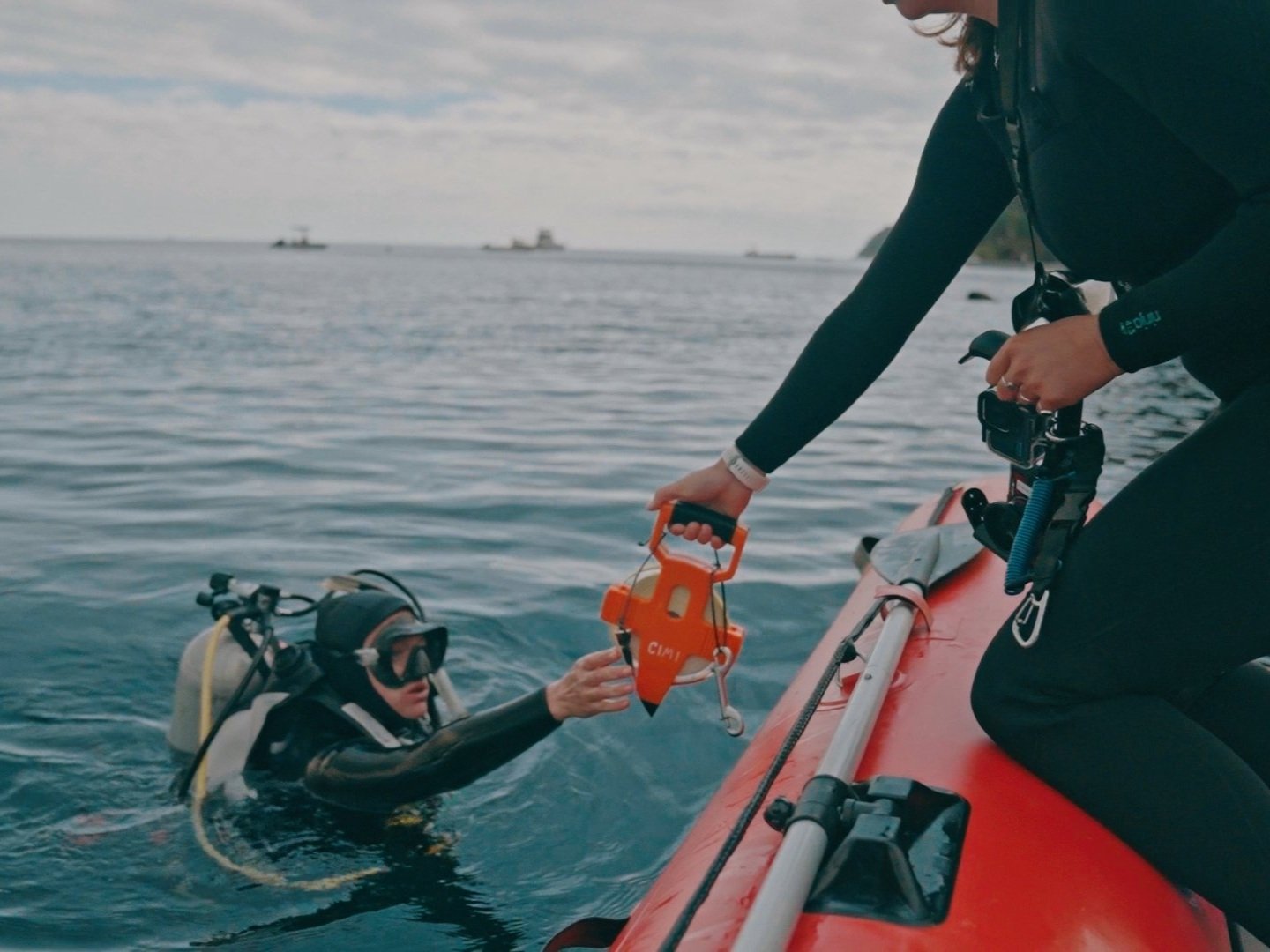How Fish Footage Helps Chronical Change Overtime
To better understand how changes in kelp impact local marine life, it’s important to make ongoing observations. Enter video transects, a dynamic tool that helps scientists collect clues by surveying a particular environment over time!
The CIMI Kelp Restoration team typically conducts video transects during surveys at our Fox Landing and Toyon Bay restoration sites. During this transect, the team follows a predetermined path to collect visual data of life below the surface.
A diver is equipped with a measuring tape for an upcoming transect.
A diver establishes the predetermined path for an underwater transect.
The diversity of species found in a kelp forest helps indicate its overall health. While reviewing this footage, we’ll record different species, the number and size of fish observed, algae presence, water conditions and different substrate types. As we continue to return and document the same transect line, we’ll be able to compare changes over time. This long-term visual data is key for kelp restoration monitoring.
Wonder what it's like to dive a transect line? Now's your chance! Watch the the video below and take note of the fish you encounter as well as try to identify each species. Please note, this 25-meter transect ends at the edge of the rock, so do not count the fish over the sand at the end.
During this transect, our divers followed and filmed a predetermined path that was 25 meters long, about half the length of an Olympic-sized swimming pool. The goal was to collect visual data of life below the surface.



